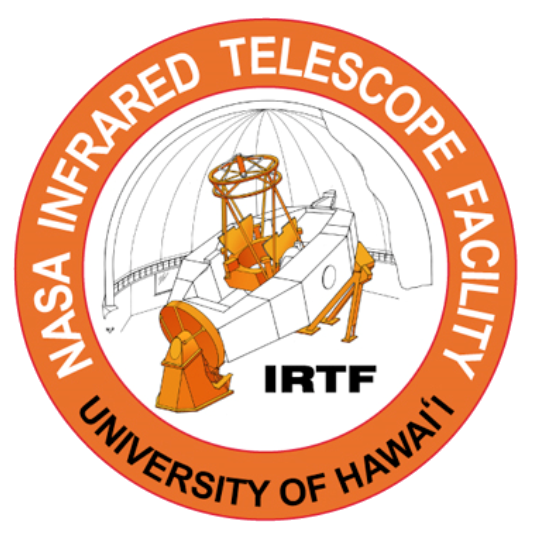IRTF Logistics and Transportation
(rev. 09/01/2021)
At the summit the senior IRTF staff member is responsible for the safety of the telescope and all visitors. Normally, this will be the telescope operator. His or her instructions must be followed.
LOGISTICAL ARRANGEMENTS: All logistical arrangements for your run, with the exception of equipment shipping covered below, will be handled by your support astronomer as indicated on the telescope schedule. Attempting to deal with others directly will lead to confusion and possible loss of information. Please submit the Observing Requirements Form (ORF) provided on our web site one month prior to your run. An ORF is also required for remote and service observing. This and other policies and information regarding observing may be found here. Please read them before your run. Approval of any change to the designated observers on your telescope time applications must be requested from the IRTF Division Chief.
TRANSPORTATION: IRTF driver's clearance form(s) must be received one week prior to arrival date before a vehicle assignment is made. This form may be downloaded from our ORF Transportation section. Each person who is expected to drive the IRTF vehicle must submit a driver's clearance form. Submission instructions are included in the form. To get to the IRTF vehicle, you must take a taxi from the Hilo Airport to the IfA Hilo building located at 640 N. A`ohoku Place. The IfA building is located adjacent to the Subaru Telescope building. A key will be left for you in a lock box located at the side entrance of the IfA building. The vehicle will be in the parking lot. If you cannot find the IRTF vehicle belonging to the key in the lock box, please call Chris Yamasaki (808) 936-6668. When returning to the airport, reverse the procedure: park the vehicle at the IfA Hilo building and return the key to the lock box, and then take a taxi to the airport. A taxi may be called with a cell phone that is in each vehicle. To save time, call for a taxi ahead of time. If your form is not received, you may be required to make your own transportation arrangements; i.e., rent a car. You are required to be on the mountain approximately 24 hours before your scheduled run. If you need to arrive several days early for instrument setup, or if you anticipate needing transportation between Hale Pohaku and Hilo other than at the beginning and end of your visit, please remember that you should rent your own vehicle. Also, if your observing party requires the use of more than one vehicle between Hale Pohaku and the summit, please rent a 4-wheel drive. An IRTF vehicle will be provided for one round trip only from Hilo to the summit for the entire observing team, and for official trips between the Hale Pohaku and the summit. Any other use of vehicles is prohibited.
TRAVELING FROM HILO TO HALE POHAKU AND THE OBSERVATORY (see map) The mid-level facility at Hale Pohaku is reached by a 90-minute drive over substandard roads. The first 45-km (28-mile) stretch, on State Highway 200 (Saddle Road) from Hilo to the turnoff (Humuula Sheep Station) is on a paved road, but with about one quarter of the asphalt surface in poor condition. Frequent curves and dips on this road restrict visibility and drivers should be particularly wary of oncoming traffic; there is frequent heavy rain and fog, which both make the road slippery and restricts visibility. The most significant hazards are speeding and inattention at the wheel; observers should arrange their schedule to ensure they are well rested, and have ample time to make this journey. The turnoff from the Saddle Road to the access road to Mauna Kea is on the right-hand side, just before the 28-mile marker (there is no sign marking this turnoff as the road to Mauna Kea). The turnoff is opposite a small hill on the left, which sticks out of the lava, and is also opposite a hunters' check-in station.
The connection to Hale Pohaku from Highway 200 is by a 10-km (6-mile) paved road (see map), which passes through open grazing land, and drivers should beware of stock wandering on the road. Although very steep in parts, this road can be negotiated by a two-wheel drive automobile.
The 13.7-km (8.5-mile) road from Hale Pohaku to the summit should be driven only in 4-wheel drive vehicles. The road is rough in some places, and always dusty. A 25-mph speed limit applies on this road. Gasoline is provided at Hale Pohaku for IRTF vehicles.
When returning to Hilo, be especially cautious at the section between the 12- to 14-mile markers on Saddle Road. Be prepared for unexpected and sudden stops for cars parked in the middle of the road or on the shoulders for various reasons. Numerous accidents have occurred at this stretch of road. Comply with the speed limits and heed all dangerous-curve warnings.
LODGING AT HALE POHAKU: Mauna Kea Support Services manages the Mid-Level Facility at Hale Pohaku. Your official IRTF-sponsored time at Hale Pohaku includes two nights before the scheduled observing run and one night after. The IRTF pays for meals and lodging for a maximum of two U.S.-based observers for this period. You may be able to extend your stay beyond this period subject to the availability of space, but you will be charged the current daily rate of $200.00/night (subject to change). All additional observers will be charged the current daily rate for their full stay and for any other charges incurred. Note that accomodations at HP are limited to only observers and observatory staff. Non-covered charges will be billed after your stay and may be paid with a check payable to the 'University of Hawaii' or with a credit card. If you wish to pay by credit card, please complete the credit card authorization form. The form can be submit ted via fax to our Hilo office at (808) 933-0737 or you may call (808) 932-2301 to relay your information over the phone, or mail completed form to Institute for Astronomy, Attn: IRTF Fiscal Officer, 640 N. Aohoku Place, Hilo, HI 96720 or you can call (808) 932-2301 to make arrangements to submit your form at the IfA building before or after your observing run.
Note that all observers receiving Hale Pohaku subsidies must complete a WH-1 form. Be aware that there may be tax withholding implications for any non-U.S. citizen or permanent resident subsidy recipients and they will be contacted by the IRTF fiscal administrator if there are additional requirements. A link to the most recent form is available on the University of Hawaii Fiscal Management Office forms page under Miscellaneous Forms. A pdf version of the form is available here. Once completed and signed, please mail the original form to IRTF Fiscal Officer, Institute for Astronomy, 640 North A`ohoku Place, Hilo, HI 96720. The form needs to be received for each observer receving a subsidy prior to any disbursement.
EQUIPMENT: If you are sending equipment and require IRTF assistance in bringing it up to the summit, you should contact the IRTF Observatory Manager, Chris Yamasaki, directly to make arrangements.
CRYOGENS: The IRTF will provide all cryogen required to operate facility instrumentation. In addition, the IRTF will pay for liquid nitrogen required for visitor instruments. Visitors who require liquid helium should discuss their requirements with Chris Yamasaki (phone: (808) 974-4210) well in advance of their observing run and should plan to purchase liquid helium directly with our supplier (Gaspro).
"Visiting Astronomer at the Infrared Telescope Facility, which is operated by the University of Hawaii under contract 80HQTR24DA010 with the National Aeronautics and Space Administration."
If IRTF facility instruments have been used (iSHELL, SpeX, MORIS, MIRSI, MOC, `Opihi), the instrument paper must be cited. The citation can be found on the relevant instrument webpage.


